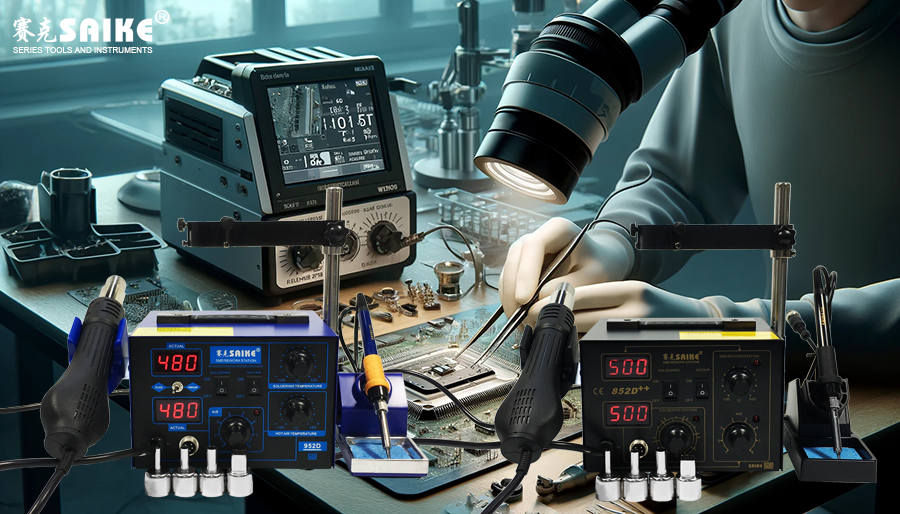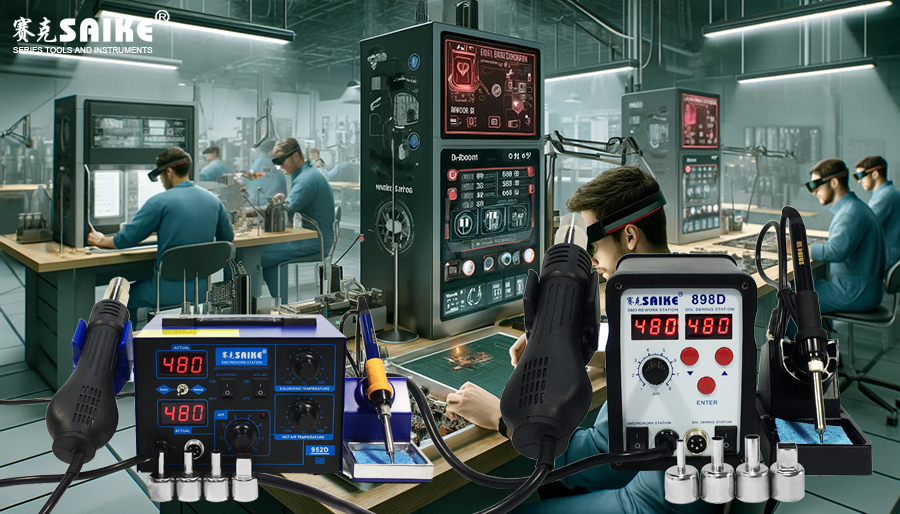
SK-YJ000RFCHT-KP 100019
In the field of electronic repair and assembly, the hot air rework station is a crucial tool for handling high-density pin components, such as QFPs, BGAs, and the like. Due to the extremely small pin spacing of these components, their desoldering requires particularly delicate operations to avoid damaging the components or adjacent circuits. This article will detail the desoldering techniques for high-density pin components using a hot air rework station.
I. Preparation
1.Equipment Selection:
– Ensure that the hot air rework station used has the ability to finely control temperature and air speed. Select a suitable nozzle, which usually requires a smaller one to precisely control the direction and range of hot air.
2.Workstation Setup:
– Prepare an anti-static work environment, using an anti-static mat and a grounded wrist strap. Ensure adequate lighting and keep the work area clean and dust-free.
3.Inspection and Cleaning of Components:
– Before starting, use a microscope to inspect the target components and their surrounding areas for obvious damage or impurities. Clean the area to be desoldered with a residue-free cleaner.
II. Temperature and Air Speed Settings
1.Temperature Setting:
– Set the temperature of the hot air rework station slightly higher than the melting point of the solder. For lead-free solder, it may need to be set between 240°C and 260°C; for leaded solder, it is usually set between 200°C and 220°C.
2.Air Speed Adjustment:
– Adjust the air speed to medium or low to avoid hot air blowing away the solder or damaging adjacent sensitive components.
III. Desoldering Operation
1.Heating Process:
– Aim the nozzle at the component and start heating evenly from one corner. To evenly melt the solder, the nozzle should move slowly, avoiding prolonged stays in the same position.
– For complex components like BGAs, it may be necessary to move from the center outward, ensuring uniform heating of the entire solder joint area.
2.Removal Technique:
– Once the solder is melted, gently lift the component using fine tweezers or a pickup tool. Make sure all pins are unsoldered to avoid damaging the pins or solder pads by forced pulling.
– If any pins are found to be not completely unsoldered, refocus on that area and gently heat until the solder is completely melted.
IV. Post-Processing and Inspection
1.Cleaning the Solder Pads:
– Use solder wick or a solder pump to remove residual solder, and then clean the entire soldering area with a residue-free cleaner.
– Inspect the solder pads for damage to ensure smooth soldering in the future.
2.Inspection and Testing:
– Use a microscope to recheck the treated area, ensuring there are no short circuits or cold solder joints.
– If possible, perform electrical tests to verify whether the removal of the component has affected the circuit’s functionality.
V. Summary
When handling high-density pin components with a hot air rework station, precise temperature control, appropriate air speed, and meticulous operation are key to success. By following the aforementioned steps and techniques, high-density pin components can be effectively desoldered while minimizing potential damage to the circuit board. Always maintain patience and attention to detail, which will help you succeed in electronic repair and assembly work.


